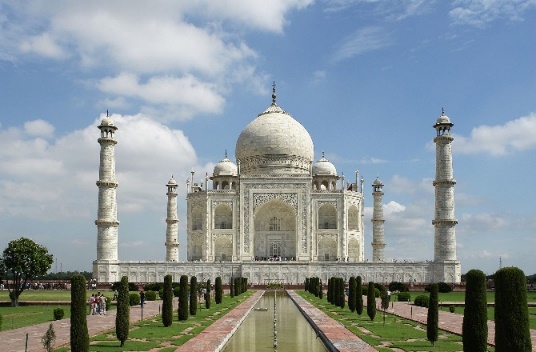17 THE INDIAN SUBCONTINENT
The sons of Akbar inherited his empire but not his administrative abilities. Jahangir (1569—1627), who ruled first, was a weak and ineffective ruler. His brother, Jahan (1592-1666), was a more effective ruler who continued the tolerant policies of his father. Deeply in love with his wife, Mumtaz, he built the Taj-Mahal (seen in the photo below), as a tribute to her and their love after her death.

India was then at a zenith of prosperity and prestige, in spite of one of the worst famines in history occurring in 1630-31, with hundreds of thousands dying. Copper began to run out, in spite of some imports from China and Japan, so that copper coinage slowed down, and silver came to the fore. Every urban center in India had its money-changing bankers – the Sarafs who were part of the merchant Bania caste. Although there were no large stock exchanges as in Europe, still there were bills of exchange, currency exchange, credit, and maritime insurance with members of the Bania caste acting as brokers and middlemen for all the European activities.
By the end of the 17th century, the Mughal administration was in decay. Military leaders from the former Hindu kingdom of Maharashtra in Central India waged war on the the Deccan and eastern provinces. Previous Mughal allies such as Rajputs, Sikhs, Jats, and Satnamis rebelled by declaring their independence. In the meantime, even though the Portuguese influence on the coast shrank both in territory and commercial profit, they were replaced by Dutch, English, French, and Danish companies who set up coastal trading centers to export textiles, sugar, indigo, and salt.
In the northern Punjab, the Sikhs sought to reconcile the Muslim and Hindu faiths in a higher revelation, and their canon of religious writings was officially closed in 1604. Soon thereafter the Sikh leaders fell afoul of the Mughal authorities and the community took to arms, battling the Mughals throughout the remainder of the century. In 1699, the Guru Gobind Singh made the Granth, scriptures from writings of Hindu, Muslim and Sikh holy men, the official sacred text of Sikhism.
